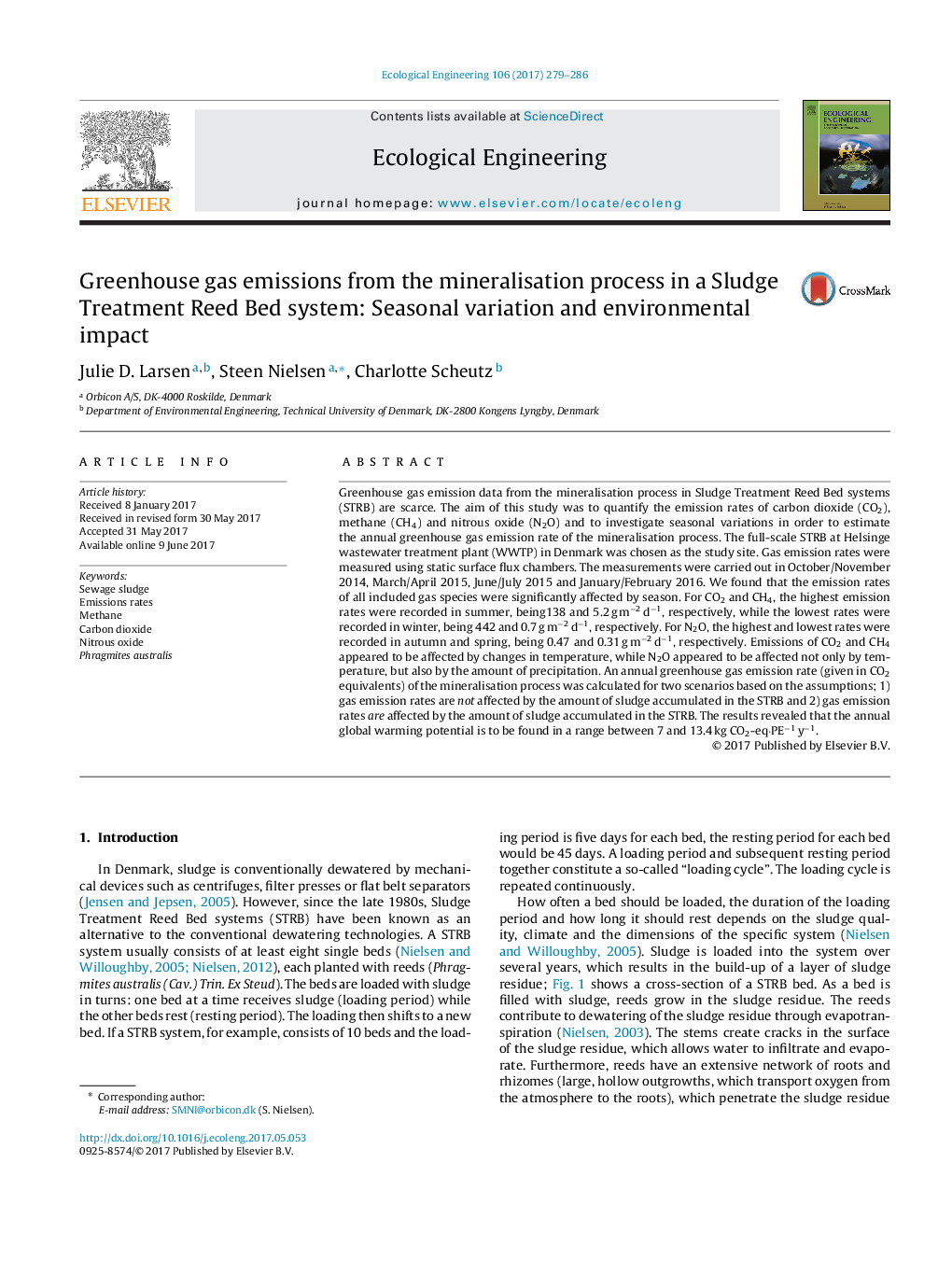| Article ID | Journal | Published Year | Pages | File Type |
|---|---|---|---|---|
| 5743844 | Ecological Engineering | 2017 | 8 Pages |
â¢Emissions of CO2, CH4 and N2O from a STRB were quantified in a full-scale STRB.â¢Emissions of CO2, CH4 and N2O varied significantly between seasons.â¢Emissions of CO2 and CH4 peaked in summer, while emissions of N2O peaked in autumn.â¢Based on these emissions, an annual GWP for the mineralisation process was calculated.â¢The GWP for the mineralisation process was 9.3-13.7 kg CO2 Eq's·PEâ1·yearâ1.
Greenhouse gas emission data from the mineralisation process in Sludge Treatment Reed Bed systems (STRB) are scarce. The aim of this study was to quantify the emission rates of carbon dioxide (CO2), methane (CH4) and nitrous oxide (N2O) and to investigate seasonal variations in order to estimate the annual greenhouse gas emission rate of the mineralisation process. The full-scale STRB at Helsinge wastewater treatment plant (WWTP) in Denmark was chosen as the study site. Gas emission rates were measured using static surface flux chambers. The measurements were carried out in October/November 2014, March/April 2015, June/July 2015 and January/February 2016. We found that the emission rates of all included gas species were significantly affected by season. For CO2 and CH4, the highest emission rates were recorded in summer, being138 and 5.2 g mâ2 dâ1, respectively, while the lowest rates were recorded in winter, being 442 and 0.7 g mâ2 dâ1, respectively. For N2O, the highest and lowest rates were recorded in autumn and spring, being 0.47 and 0.31 g mâ2 dâ1, respectively. Emissions of CO2 and CH4 appeared to be affected by changes in temperature, while N2O appeared to be affected not only by temperature, but also by the amount of precipitation. An annual greenhouse gas emission rate (given in CO2 equivalents) of the mineralisation process was calculated for two scenarios based on the assumptions; 1) gas emission rates are not affected by the amount of sludge accumulated in the STRB and 2) gas emission rates are affected by the amount of sludge accumulated in the STRB. The results revealed that the annual global warming potential is to be found in a range between 7 and 13.4 kg CO2-eq·PEâ1 yâ1.
Graphical abstractDownload high-res image (208KB)Download full-size image
